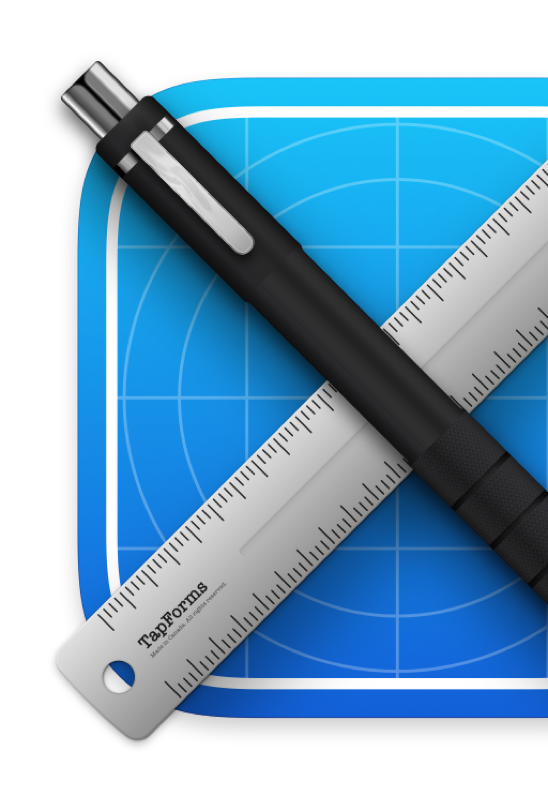Search Results for 'script'
-
Search Results
-
Topic: Drug Wars for Tap Forms 5
The other day I had a random thought: could I port the old Drug Wars game that I used to play on my calculator over to Tap Forms 5? Since you’re reading this you probably guessed the answer is yes!
For those not aware, Drug Wars was a popular game for the TI-82/TI-83/TI-84 series of graphical calculators that one might find in a high school maths class. I found a version of it online in a Gist and set to porting it over to Tap Forms.
I used some of my prompter support functions (also available via Script Manager), added some helper functions to emulate what the calculator provides and mostly faithfully ported it into Javascript and Tap Forms 5 for Mac.
Note: this won’t work on iOS because
Utils.alertWithMessageon iOS doesn’t block like it does on the Mac. Hopefully Brendan can figure out how to make that consistent, or suggest a change to make it work, so that you can use Tap Forms for iOS and iPadOS to also play the game.If you’re interested in checking it out, it’s here in a Gist on GitHub: https://gist.github.com/pasamio/3238964489c6594ab1983b7aaa02b91b
As a note, it’s a Javascript almost lines for line replication of what the original TI-BASIC programming. It’s hampered a little because TI-BASIC has labels/goto whilst Javascript doesn’t provide that feature (probably because goto considered harmful) so that leads to more creative solutions to flow control. There’s an elegance in how the spaghetti code in TI-BASIC works that perhaps reminds us how things used to be.
And now to ping the keymaster because I’m sure this post will get flagged…
Hi, is there anyway or script to set the Record List font size and Color?
What im trying to achieve is…
Example : On my list of records, im display 4 field lines for each record (yes, this can be selected on the Single Column List View field options).. But for each record, i would like the first 2 lines(in the record list) to be displaying in bigger font size, and with a different font colour. Is this achievable by scripting, or any method in TF?
note: i only want the colour of the text to change, not the entire record background color. Also i understand the field value color can be changed, but i only sees the changes on my display layout, and not on the recordlist
Any suggestion and help would be greatly appreciated, and thank you in advance
Greetings,
Apologies in advance if I’m over-complicating things here (it’s something I tend to do often lol)…
I am seeking suggestions for my initial forms structure. I’ve searched the forums extensively, but I’m having difficulty translating my situation into database-related terminology. The file I am creating is an asset inventory database consisting of items in various categories (computers, printers, devices, phones, keys, etc). The data is being migrated from GLPI (a PHP/SQL application), so it resides in a multitude of separate SQL/CSV tables. I’m fine with updating the source data in terms of translating IDs to text and restoring relationships, but I’m also looking to re-organize the inventory for use in tapforms.
Essentially, every item has a unique identifier field, referred to as “ASSET ID”. This field is a simple sequential value ranging from “PSC000001” to “PSC002013”. What I haven’t been able to figure out is how (and if) I can continue using this identifier field while using multiple forms within the file.
To elaborate: a “Computers” form would obviously have many different fields than a “Printers” form. What is the best way for me to use different forms for each, but to have BOTH forms use a single, related “Asset ID” field? I had considered taking a reverse logic approach in which all items were listed in a single form, but I’ve found that “hiding” fields that are not relevant to the device category is either not possible or is far beyond my scripting capabilities. I also feel this would negate many of the organizational benefits of using tapforms.
I’m sure the first question many of you will ask is “why is it so important to retain this Asset ID field”… There are a few reasons I can offer, and I am 100% open to alternative suggestions:
1. “Asset ID” has been used in our office for many years as the primary identifier for these items. It is incorporated into our ticketing and purchasing systems, both of which are outside of my control.
2. The Asset ID (with barcode) is also pre-printed on our inventory labels that are applied to all newly purchased items. These labels are often scanned for use with clinical software, so they’re not going away or changing format any time in the near future.
3. Obviously, it is imperative that the Asset ID is a UNIQUE value without any duplications. Less critically (but still important) is the need to ensure sequential numbering. The next new item added to our inventory should be assigned “PSC002014”, regardless of whether its a computer, a phone, or a television.
I already sense that I’m rambling, so I’ll just leave this here and cross my fingers that what I’m asking makes sense. Thanks in advance for ANY suggestions anyone may have for a way to create this file without having to re-invent the wheel!
Best,
Kirk


